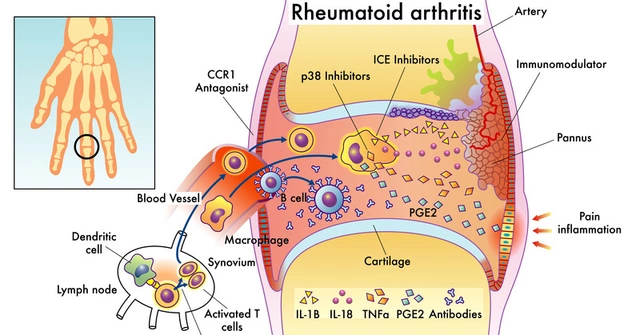Desmopressin and Its Role in the Management of Post-Transplant Diabetes Insipidus
Introduction to Desmopressin and Post-Transplant Diabetes Insipidus
As someone who is passionate about raising awareness on various medical conditions and their management, I feel it is essential to shed light on a lesser-known yet significant issue - Post-Transplant Diabetes Insipidus. In this article, I will discuss the role of Desmopressin in managing this condition. Post-Transplant Diabetes Insipidus is a form of diabetes insipidus that occurs after a kidney transplant. It is characterized by excessive thirst and the frequent production of large volumes of dilute urine.
Desmopressin is a synthetic analog of the naturally occurring hormone vasopressin, which is responsible for regulating the body's water balance. This medication has been proven effective in managing symptoms associated with Post-Transplant Diabetes Insipidus. In the following sections, we will delve deeper into understanding this condition and the benefits of Desmopressin therapy.
How Post-Transplant Diabetes Insipidus Develops
Post-Transplant Diabetes Insipidus can be a temporary or permanent condition that occurs after a kidney transplant. The exact cause of this condition is not well understood, but it is believed to be related to the disruption of the normal function of the kidneys and the hypothalamus, which is responsible for producing vasopressin. This disruption in vasopressin production leads to an imbalance in the body's ability to regulate water absorption and excretion, resulting in symptoms of diabetes insipidus.
Additionally, the use of certain medications, such as diuretics or immunosuppressive drugs, may contribute to the development of Post-Transplant Diabetes Insipidus. The condition may also be triggered by factors such as infection, inflammation, or injury to the transplanted kidney or the surrounding tissues.
Identifying the Symptoms of Post-Transplant Diabetes Insipidus
Recognizing the symptoms of Post-Transplant Diabetes Insipidus is crucial for early diagnosis and treatment. The primary symptoms of this condition include excessive thirst (polydipsia) and increased production of large volumes of dilute urine (polyuria). These symptoms may be accompanied by other signs, such as fatigue, dehydration, dry mouth, and electrolyte imbalances.
It is important to note that the severity and duration of these symptoms can vary among individuals. Some may experience mild symptoms that resolve on their own, while others may require medical intervention to manage the condition effectively.
Diagnosing Post-Transplant Diabetes Insipidus
A proper diagnosis of Post-Transplant Diabetes Insipidus is essential to ensure appropriate treatment and management. The diagnostic process typically involves a thorough medical history and physical examination, followed by various laboratory tests. Some of the tests that may be conducted include measuring urine output, urine osmolality, and blood electrolyte levels.
In some cases, additional tests, such as magnetic resonance imaging (MRI) or computed tomography (CT) scans of the brain, may be performed to rule out other potential causes of the symptoms.
Desmopressin: The Preferred Treatment for Post-Transplant Diabetes Insipidus
Desmopressin has emerged as the preferred treatment for Post-Transplant Diabetes Insipidus due to its proven efficacy and safety profile. This synthetic vasopressin analog works by mimicking the action of the natural hormone, thereby helping to regulate the body's water balance and alleviate the symptoms associated with the condition.
Desmopressin is available in various forms, including oral tablets, nasal spray, and injectable solutions. The choice of administration route and dosage depends on the severity of the symptoms and the individual's response to treatment.
Benefits of Desmopressin Therapy
Desmopressin therapy offers several benefits for individuals suffering from Post-Transplant Diabetes Insipidus. Some of the most notable advantages of this treatment include:
- Effective reduction of symptoms such as excessive thirst and frequent urination
- Improved quality of life and overall well-being
- Minimal side effects and low risk of complications
- Convenient administration options, allowing for personalized treatment plans
Potential Side Effects and Precautions
While Desmopressin is generally well-tolerated, it is not without potential side effects. Some of the most common side effects associated with this medication include headache, nausea, abdominal pain, and nasal congestion (when administered as a nasal spray). In rare cases, more serious side effects, such as hyponatremia (low sodium levels in the blood), can occur.
To minimize the risk of complications, it is essential to follow the prescribed treatment plan and inform your healthcare provider of any existing medical conditions or medications that you are taking. Regular monitoring of blood electrolyte levels may also be necessary to ensure the safe and effective use of Desmopressin.
Conclusion: The Importance of Early Diagnosis and Treatment
In conclusion, Post-Transplant Diabetes Insipidus is a complex condition that requires prompt diagnosis and appropriate management. Desmopressin has proven to be an effective treatment option for this condition, offering significant benefits for individuals suffering from the debilitating symptoms associated with it. By recognizing the signs of Post-Transplant Diabetes Insipidus and seeking medical intervention early, individuals can significantly improve their quality of life and overall well-being.











I've seen this in my uncle's post-kidney transplant journey. Desmopressin was a game-changer for him. No more 3 a.m. bathroom runs. He even started sleeping through the night again. Simple fix, huge quality of life boost.
Oh great. Another article that makes Desmopressin sound like a miracle drug. Let me guess - next you’ll tell me it cures hangovers and makes your WiFi faster? Because that’s what the pharma reps told me when I was on it. Hyponatremia? More like hyponatremia-ception.
While I appreciate the clinical overview, I must respectfully point out that the literature on transient DI post-transplant is still evolving. The 2018 Nephrology Review (Vol. 42, Issue 3) noted a 68% spontaneous resolution rate within 90 days. Desmopressin is indeed effective, but perhaps not as universally necessary as portrayed. Also - nasal spray vs. tablet? That’s a whole other debate.
Wait wait wait - so this drug is like a water regulator?? So it’s not actually fixing the kidney?? It’s just telling your body to chill out and stop peeing every 10 minutes?? That’s wild. I thought the transplant was supposed to fix everything?? Why is my body still being a drama queen??
I work in a dialysis center in Delhi and we see this often. Desmopressin works but patients forget to drink enough - then they get confused. It’s not the drug, it’s the combo. Also, some folks think it’s diabetes type 1 and panic. Just need education. Small things matter.
It’s fascinating how medicine has become this elaborate performance where we replace one hormone with a synthetic version, pretending we understand the body’s delicate dance - when really, we’re just patching holes in a sinking ship with duct tape and hope. Desmopressin doesn’t heal. It just silences the symptoms. And isn’t that what we’ve all been doing since the Industrial Revolution? Suppress. Don’t solve.
Oh wow, so now we’re giving people synthetic hormones because their kidneys got tired of being a vending machine? How revolutionary. I’m sure the transplant surgeons didn’t just forget to mention that your body might not magically reboot after surgery. Next up: a pill that makes your ex miss you.
Desmopressin? More like Desmo-please-stop-peein’-so-hard. I had a cousin who got one of these transplants - he was like a walking faucet until he got this. Now he drinks chai, sleeps like a baby, and doesn’t look at the toilet like it’s his worst enemy. Funny how a tiny pill can turn chaos into calm.
I had a friend who went through this. She was so exhausted all the time. After starting desmopressin, she started painting again. Like, real paintings. Not just doodles. It gave her back her energy. That’s the real win.
This is just another way for Big Pharma to make money off people who already got a kidney transplant. Why not just tell them to drink less water? Problem solved. Also, why do we need a synthetic version? Nature already made vasopressin. We’re overcomplicating everything.
Let’s be real - this isn’t medicine. It’s a corporate convenience. We transplant kidneys, then we patch the side effects with patented molecules that cost $200 a pill. Meanwhile, the real issue - why are we transplanting kidneys into people who still have metabolic chaos? - gets ignored. Desmopressin isn’t a cure. It’s a Band-Aid on a bullet wound.
I think this whole DI thing is just a scam. I read on a forum that it’s actually caused by the anesthesia used during transplant. And the desmopressin? Totally unnecessary. People just need to stop drinking so much water and get more sleep. Also, I think the FDA is hiding something.
I’ve seen this work wonders. My sister was in ICU after her transplant, and the DI was terrifying. Desmopressin brought her back to normal within days. No drama. Just science helping people.
I’ve been researching this for 14 months. The real cause is electromagnetic interference from hospital equipment. Desmopressin doesn’t fix that. It just masks the symptoms. The NIH knows this. They just don’t want to admit it because it would mean redesigning every ICU. Also, the FDA is owned by Pfizer.
Man, I had a buddy go through this. He was a mess - no sleep, no focus. Desmopressin? He got it, and boom - he started running again. Like, 5Ks. He said it felt like his body finally stopped screaming. So yeah. This stuff works. Just don’t skip the blood tests.
So you’re telling me this drug makes you stop peeing every 15 minutes? That’s it? That’s the big reveal? I thought we were curing cancer. Nope. Just a fancy pee button. Cool.
One must consider the ontological implications of pharmacologically modulating endogenous hormonal pathways in post-surgical immunocompromised populations. The substitution of a synthetic ligand for a naturally occurring peptide raises profound questions regarding homeostatic integrity and the epistemological boundaries of therapeutic intervention. Furthermore, the commercialization of desmopressin reflects a broader trend toward the commodification of physiological regulation.
This is what happens when you let foreigners run our hospitals. We used to fix kidneys. Now we give people synthetic hormones because we can’t be bothered to teach them to drink less water. Also, this is a plot to get everyone on Medicaid. Desmopressin is just the gateway drug to government dependency.